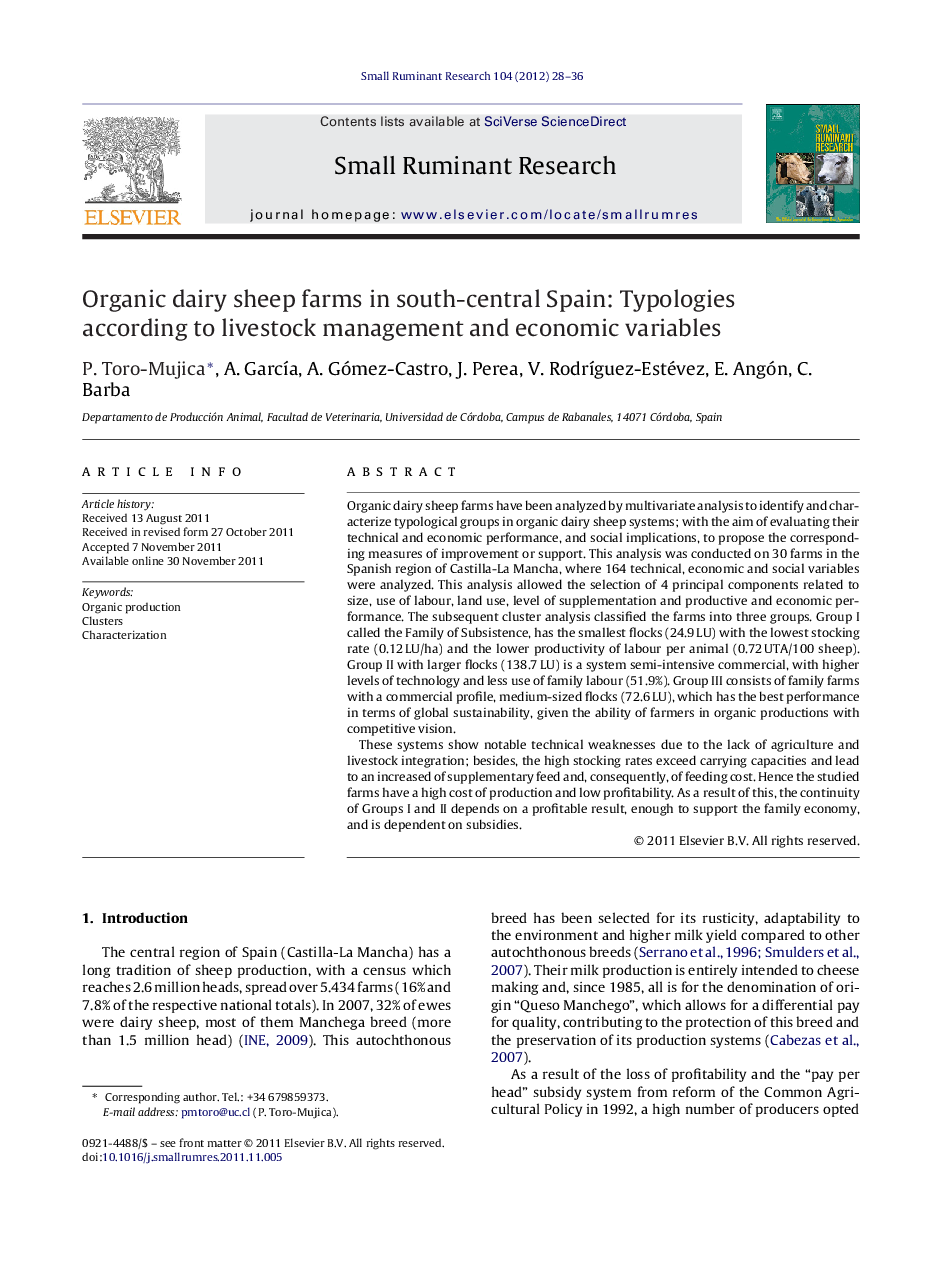| Article ID | Journal | Published Year | Pages | File Type |
|---|---|---|---|---|
| 2457220 | Small Ruminant Research | 2012 | 9 Pages |
Organic dairy sheep farms have been analyzed by multivariate analysis to identify and characterize typological groups in organic dairy sheep systems; with the aim of evaluating their technical and economic performance, and social implications, to propose the corresponding measures of improvement or support. This analysis was conducted on 30 farms in the Spanish region of Castilla-La Mancha, where 164 technical, economic and social variables were analyzed. This analysis allowed the selection of 4 principal components related to size, use of labour, land use, level of supplementation and productive and economic performance. The subsequent cluster analysis classified the farms into three groups. Group I called the Family of Subsistence, has the smallest flocks (24.9 LU) with the lowest stocking rate (0.12 LU/ha) and the lower productivity of labour per animal (0.72 UTA/100 sheep). Group II with larger flocks (138.7 LU) is a system semi-intensive commercial, with higher levels of technology and less use of family labour (51.9%). Group III consists of family farms with a commercial profile, medium-sized flocks (72.6 LU), which has the best performance in terms of global sustainability, given the ability of farmers in organic productions with competitive vision.These systems show notable technical weaknesses due to the lack of agriculture and livestock integration; besides, the high stocking rates exceed carrying capacities and lead to an increased of supplementary feed and, consequently, of feeding cost. Hence the studied farms have a high cost of production and low profitability. As a result of this, the continuity of Groups I and II depends on a profitable result, enough to support the family economy, and is dependent on subsidies.
